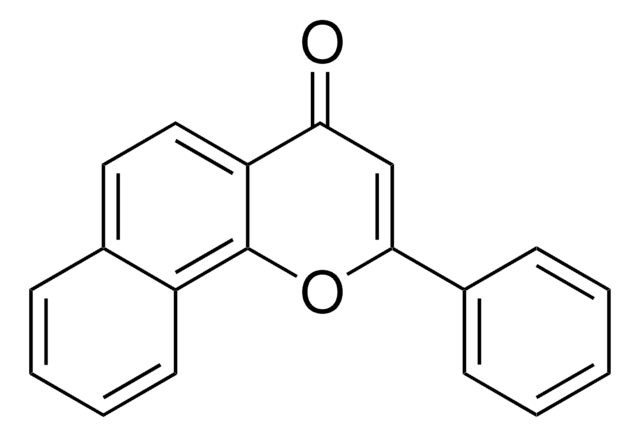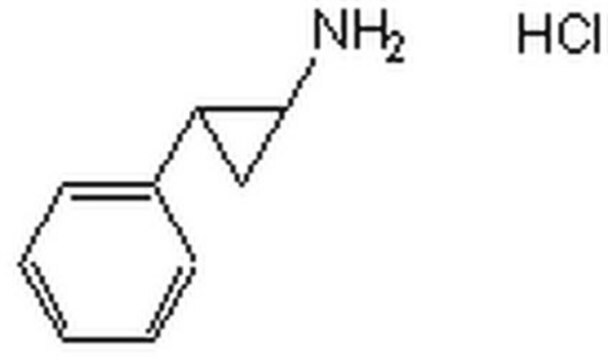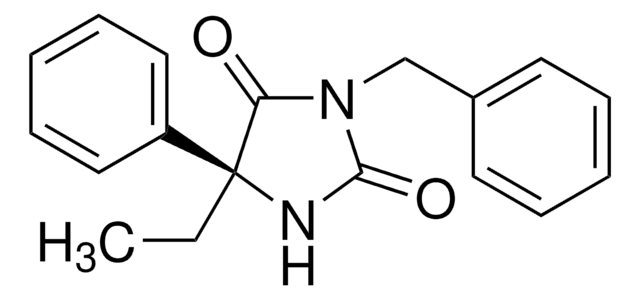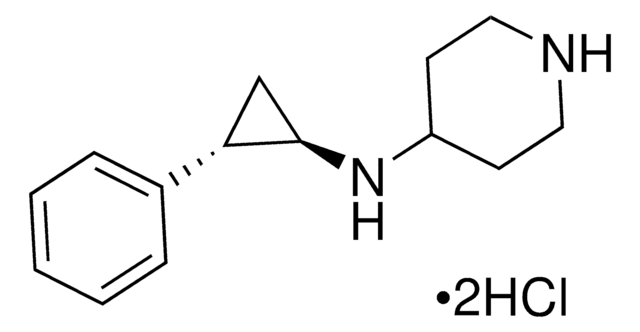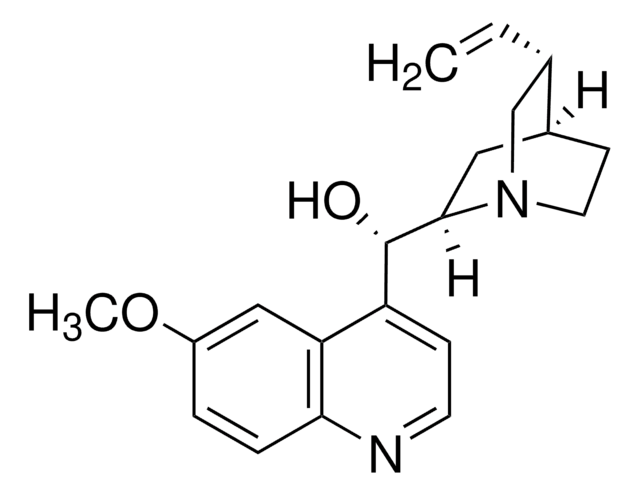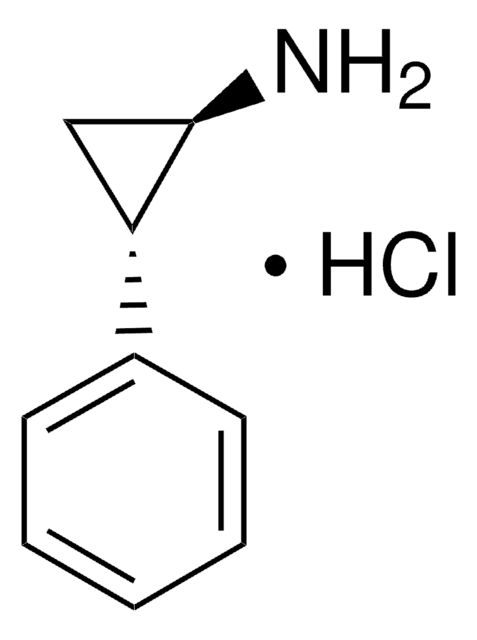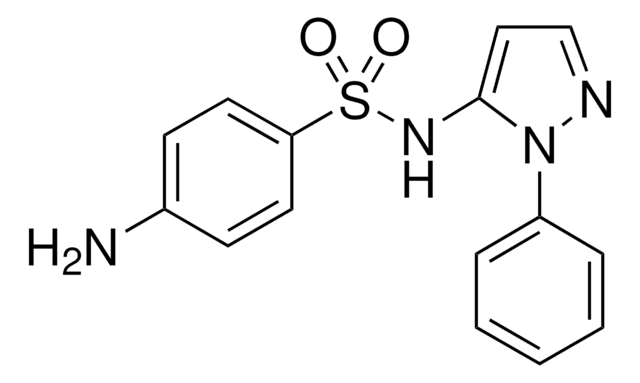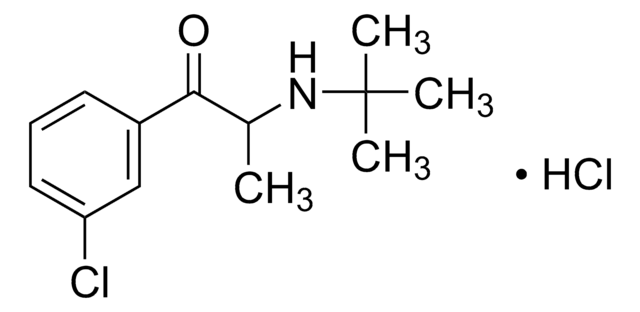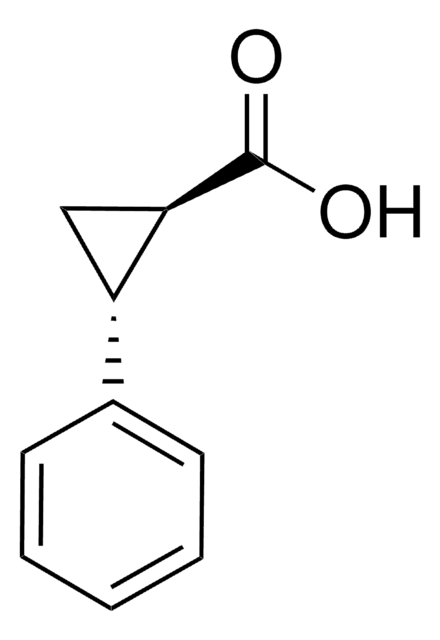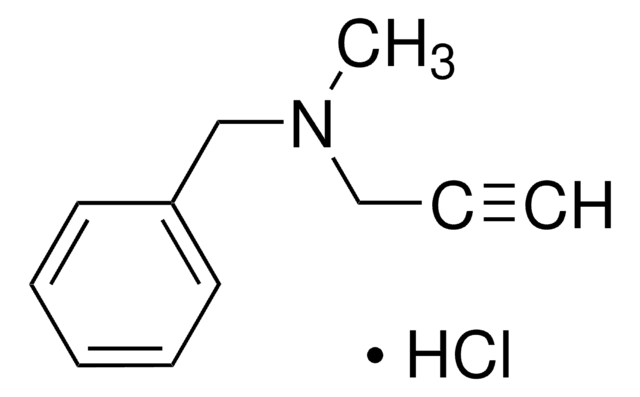P8511
trans-2-Phenylcyclopropylamine hydrochloride
Sinonimo/i:
Tranylcypromine
About This Item
Prodotti consigliati
Origine biologica
synthetic (organic)
Saggio
≥97% (TLC)
Stato
powder
Punto di fusione
162-169 °C (lit.)
Solubilità
ethanol: 50 mg/mL, clear to slightly hazy
Temperatura di conservazione
2-8°C
Stringa SMILE
Cl.N[C@@H]1C[C@H]1c2ccccc2
InChI
1S/C9H11N.ClH/c10-9-6-8(9)7-4-2-1-3-5-7;/h1-5,8-9H,6,10H2;1H/t8-,9+;/m0./s1
ZPEFMSTTZXJOTM-OULXEKPRSA-N
Informazioni sul gene
human ... MAOA(4128) , MAOB(4129)
Cerchi prodotti simili? Visita Guida al confronto tra prodotti
Azioni biochim/fisiol
Caratteristiche e vantaggi
Avvertenze
Danger
Indicazioni di pericolo
Consigli di prudenza
Classi di pericolo
Acute Tox. 3 Oral
Codice della classe di stoccaggio
6.1C - Combustible acute toxic Cat.3 / toxic compounds or compounds which causing chronic effects
Classe di pericolosità dell'acqua (WGK)
WGK 3
Scegli una delle versioni più recenti:
Possiedi già questo prodotto?
I documenti relativi ai prodotti acquistati recentemente sono disponibili nell’Archivio dei documenti.
I clienti hanno visto anche
Articoli
Epigenetic modifications are thought to occur through two key interconnected processes—DNA methylation and the covalent modification of histones.
Il team dei nostri ricercatori vanta grande esperienza in tutte le aree della ricerca quali Life Science, scienza dei materiali, sintesi chimica, cromatografia, discipline analitiche, ecc..
Contatta l'Assistenza Tecnica.